For centuries, the Malay world has been a crossroads of cultures. Geography has put it at the centre of trade networks between east and west; the monsoon winds made the region a sanctuary for merchants and mariners, bringers of more than trade cargoes. When Islam arrived in the Malay world, the aesthetic landscape changed forever. Not even European colonisation could hold back the tide that came with improved travel and communications between the Muslims of Southeast Asia and the heartlands of South Asia and the Middle East.

Above all was the Spice Route, which traversed the wide expanse of the Indian Ocean and beyond, defining the Malay World's connection with other regions. The ports and harbours scattered throughout the archipelago served as crucial meeting points for trade, offering opportunities to replenish supplies. These were also transits for awaiting the favourable monsoon seasons and trade winds. One of the most important port cities was Melaka, which flourished as a spice emporium. It was a pivotal entrepôt in collecting produce from neighbouring lands, including the Maluku Islands, famously known as the ‘Spice Islands’. The oceans encircling the region have served as an important conduit for travel, trade and migration. Over the centuries, this progression has woven a rich tapestry of cultural adaptations and interactions, shaping a cosmopolitan Malay world.
Oceans that Speak: Islam and the Emergence of the Malay World gives a voice to the heritage of this region, highlighting the ever-growing collection of the Islamic Arts Museum Malaysia. The exhibition explores the complex currents of exchange that came with the movement of people, ideas and faith and the artefacts on display are the creative outcome of highly distinctive and often overlooked art from this part of the world. A special publication with the same title is now available at our Museum Shop.







